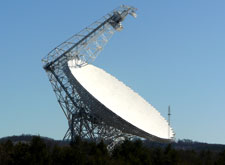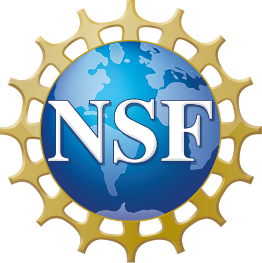GBT 4mm Receiver Project Book
Chapter 8
Data Processing
Author: David T. Frayer
Overview
The 4mm system will support the DCR, spectrometer, GUPPI, and VLB backends. The DCR backend will be used primarily for pointing, focus, and occasional tipping observations. Only one beam of the 4mm system will be used for VLB observations.
Spectrometer
The majority of the data taken with the 4mm receiver will be spectral line observations with the spectrometer. The calibration document (pdf) provides the formulae for calibrating the data. For proper calibration, the system needs the measurements made during the calibration sequence, values from several temperature sensors, real-time estimates of the current weather conditions (tau_o and T_{atm}), and system parameters such as telescope efficiencies. The following parameters need to be saved within the sdfits file of every spectral line scan.- T_{amb} derived from the ambient-load sensor during the calibration sequence.
- T_{cold} derived from the cold-load sensor during the calibration sequence.
- V_{amb} measured during the calibration sequence.
- V_{cold} measured during the calibration sequence.
- V_{sky} measured during the calibration sequence.
- T_{rx} -- receiver temperature calculated by equation 7 for the calibration sequence.
- T_{sys} -- system temperature calculated from equation 9.
- g_{avg} -- the average gain across the bandwidth measured from the calibration sequence (equation 11).
- g_{nu} -- the gain as a function of frequency measured per 1~MHz [TBD] interval across the bandwidth from the calibration sequence (equation 11).
- A -- airmass using the appropriate relationship as function of elevation.
- tau_{o} -- zenith opacity from the weather database.
- T_{atm} -- effective atmospheric temperature from the weather database.
- The outside temperature near the telescope measured by one of the weather stations or another sensor.
- Y -- Y-factor measured in the lab.
- A_{geom} -- system parameter for the area of the GBT.
- eta_l -- system parameter for ohmic losses and rearward spillover.
- eta_a -- aperture efficiency giving the effective area of the GBT (A_{effective} = eta_{a} A_{geom}).
- eta_{mb} -- system parameter for the main-beam efficiency appropriate for extended sources larger than the beam (T_{mb} = T_{A}^{*}/eta_{mb}).
- T_A -- Observed antenna temperature
- T'_A -- Antenna temperature corrected for opacity
- T*_A -- Antenna temperature from the chopper wheel calibration
- T_mb -- Main-beam temperature appropriate for extended sources
- S_nu -- Flux density scale appropriate for point sources



